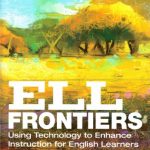Thanksgiving provides a wonderful opportunity for TESOL teachers to introduce cultural traditions, expand vocabulary, and engage learners with meaningful and fun activities. Integrating the theme of gratitude can enhance students’ understanding of American culture while also allowing them to express their own cultural traditions and personal experiences. Here are some engaging and educational Thanksgiving activities that will make your English language learners grateful for the learning experience.
1. Gratitude Tree Project
Create a “Gratitude Tree” in your classroom where students can share what they are thankful for. Provide students with colorful paper leaves and ask them to write down something they appreciate—whether it’s a person, an experience, or a simple pleasure. Once completed, they can attach their leaves to the branches of a tree illustration on the wall. This activity not only helps students practice vocabulary related to emotions and gratitude, but it also allows them to build community by learning more about each other.
2. Thanksgiving Vocabulary Bingo
Introduce your learners to Thanksgiving-related vocabulary using a fun game of Bingo. Create Bingo cards with pictures or words such as “turkey,” “pumpkin pie,” “pilgrim,” “harvest,” “parade,” and “football.” As you call out each term, provide a brief description or historical background to enhance comprehension. This game encourages listening skills, reinforces new vocabulary, and adds a touch of competition to your lesson.
3. The Story of Thanksgiving: A Reader’s Theater
Enhance reading fluency and pronunciation by setting up a Reader’s Theater where students take on different roles in a short script about the history of Thanksgiving. Assign students different parts—like pilgrims, Native Americans, or narrators—and have them read aloud in front of the class. This activity helps learners improve their reading skills while giving them a deeper understanding of American history and Thanksgiving traditions.
4. Cooking Class: Writing a Recipe for Gratitude
Teach students how to write procedural texts by creating a “recipe” for gratitude. Discuss the elements of a recipe, such as ingredients and steps, and ask them to come up with non-traditional “ingredients” like kindness, friendship, or laughter. The class can then write step-by-step instructions on how to “cook” a perfect Thanksgiving. This exercise builds writing skills, reinforces sequencing language, and encourages students to think creatively about what gratitude means to them.
5. Thanksgiving Cultural Comparisons
Have students compare and contrast Thanksgiving with a similar holiday or tradition from their own culture. Start by giving a brief overview of Thanksgiving traditions and history, and then ask students to share how their culture celebrates gratitude, harvest, or family togetherness. This can be done as a group discussion, a presentation, or a written assignment. It allows learners to make cultural connections and fosters a greater understanding of diversity.
6. Thanksgiving Charades
Charades is a fun and interactive game that can be adapted for Thanksgiving vocabulary. Write words or phrases related to the holiday (e.g., “carving a turkey,” “watching a parade,” “stuffing the turkey”) on slips of paper. Divide the class into teams and have one student from each team act out the word or phrase while their teammates guess. This activity promotes teamwork, encourages movement, and reinforces vocabulary in an enjoyable way.
7. Creating a Gratitude Journal
Encourage students to keep a gratitude journal for the week leading up to Thanksgiving. Each day, have them write a few sentences about something they are thankful for. Use this as a daily writing exercise to improve their sentence structure and vocabulary. At the end of the week, students can share an entry with the class or create a final reflective essay about the importance of gratitude in their lives.
8. Thanksgiving Debate: To Eat or Not to Eat Turkey?
Engage advanced learners in a debate on a fun and relevant topic: “Should Thanksgiving dinners include a turkey?” Divide the class into two groups, and let them prepare arguments for and against the traditional Thanksgiving meal. This activity promotes critical thinking, teaches persuasive language skills, and gives students an opportunity to practice speaking in a structured format.
9. Make a Thanksgiving Thank-You Video
Have students create a short video expressing what they are thankful for in their lives. They can include pictures, drawings, or even perform a short skit. Once all the videos are compiled, you can create a class montage and share it as a way to celebrate Thanksgiving together. This activity integrates technology with language learning and allows students to practice their speaking skills.
10. Hosting a “Friendsgiving”
For the last class before the Thanksgiving break, organize a potluck-style celebration called “Friendsgiving.” Ask students to bring in a dish that represents their cultural heritage, and have each student present the dish, explaining its cultural significance. You can combine this with a brief discussion about the origins of the word “Friendsgiving” and how it has become popular in the U.S. This activity promotes cultural exchange, encourages social interaction, and provides an authentic context for practicing English.
Why These Activities Matter
These Thanksgiving-themed activities not only teach language skills but also help learners connect with an important aspect of American culture. Incorporating elements of gratitude and tradition into your lessons can make learning more meaningful and memorable, while also fostering an inclusive environment where students can share their cultural perspectives. By embracing Thanksgiving as a learning opportunity, TESOL teachers can inspire their students to appreciate the universal values of gratitude, kindness, and community.
This Thanksgiving, give your students something to be grateful for by making your lessons engaging, fun, and filled with meaningful learning experiences!



